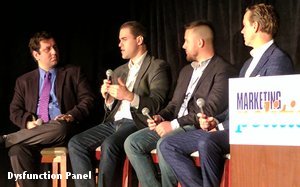Commentary
20/20 Hindsight: 2016 Wasn't 2012
- by Joe Mandese @mp_joemandese, January 17, 2017
 The key
takeaway from Marketing Politics’ opening panel in Washington, DC, this morning: If there was a “great data dysfunction,” it was that the pollsters and statisticians were making
assumptions, based on the composition and sentiment of voters coming out of the last presidential election in 2012.
The key
takeaway from Marketing Politics’ opening panel in Washington, DC, this morning: If there was a “great data dysfunction,” it was that the pollsters and statisticians were making
assumptions, based on the composition and sentiment of voters coming out of the last presidential election in 2012.
“Taking likely voter samples from 2012, but not weighting
or adjusting, based on current trending,” was the chief mistake most major polling organizations made,” says Matt Oczkowski, head of product at Cambridge Analytica.
“If you had based your weighting and sampling based on 2012, you’d have a far different view of what happened this year,” he adds.
Tyler Brown, director of digital operations at the Republican National Committee, noted there may have been too much of a dependency on “predictive analytics,” vs. “prescriptive analytics.”
He says the role of data analytics shouldn’t be “you’re going to open a door and see the future,” but to utilize it as an indicator to determine “where the holes are.”
“What are the demographics, where are they, and what are the ways to access the people who are up for grabs,” he says.















